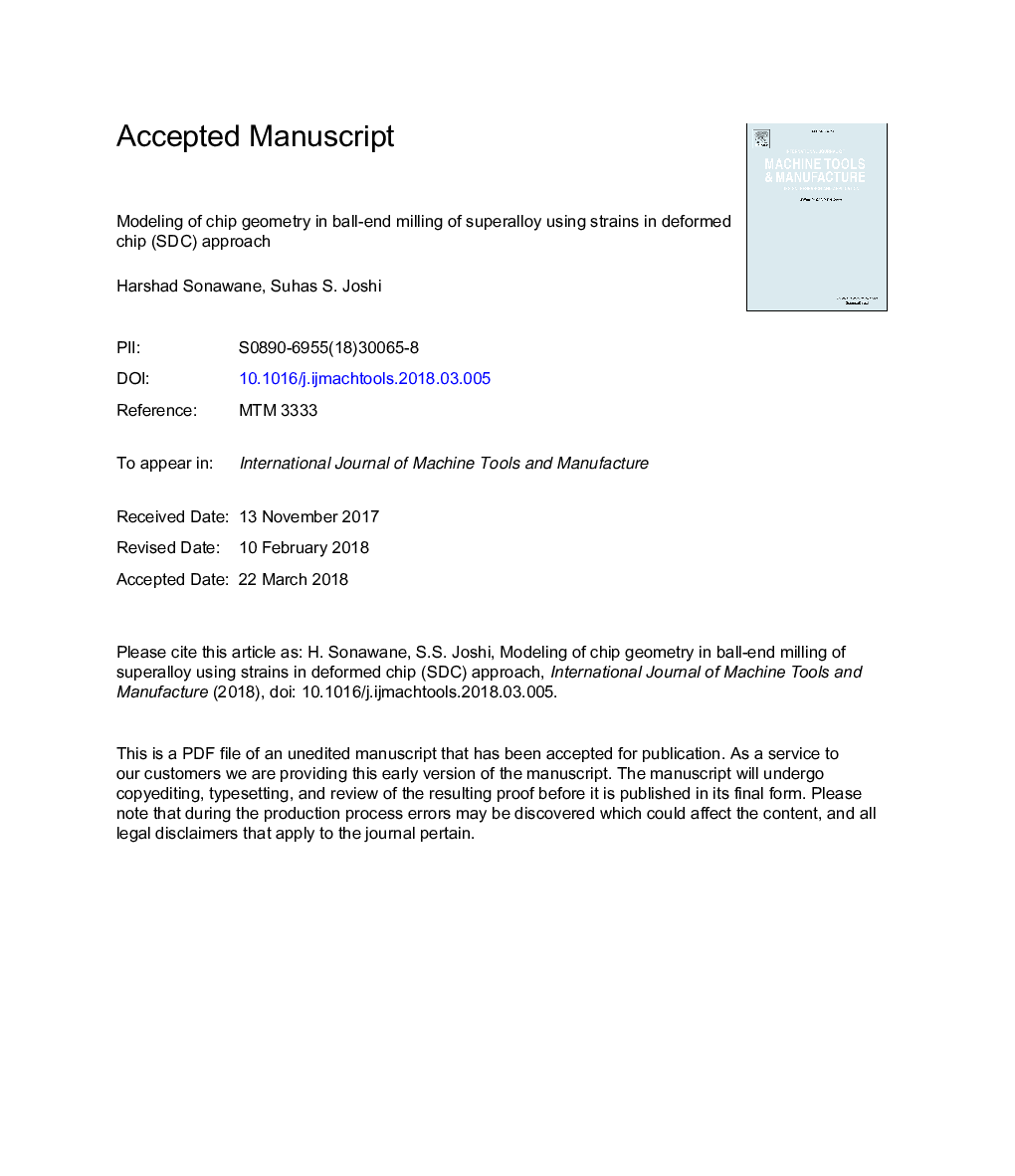| Article ID | Journal | Published Year | Pages | File Type |
|---|---|---|---|---|
| 7173344 | International Journal of Machine Tools and Manufacture | 2018 | 38 Pages |
Abstract
Knowing that the chip geometry helps predict machining forces, energy and consequently the machined surface quality, in the past, various models for the prediction of the undeformed and deformed chip geometries in ball-end milling have been evolved. It is observed that most of the models use volume constancy (VC) between the undeformed and deformed chip geometries towards evaluation of deformed chip thickness. This work presents a new approach to the deformed chip geometry evaluation, which involved considering strains in the deformed chips (SDC). In the strains developed in the deformed chip (SDC) approach, bending, compression/shear and thermal strains have been modelled using a simplified tapered cantilever shape of the undeformed chip. The cutting edge-work interactions on horizontal as well as work surfaces inclined at different angles have been considered during the model development. As the workpiece inclination increases from 0° (horizontal) to 60°, the deformed chip thickness increases by 63% due to a higher effective feed per tooth. However, the instantaneous shear angle found constant at 50° throughout the cut for a typical machining parametric combination. A comparison of SDC and VC approach shows that the magnitudes of deformed chip thickness, shear angle and the resultant cutting forces obtained using SDC models match more closely (within 90%) with the experimental data. It is envisaged that such models when incorporated in the cutting force models, would help predict cutting forces more accurately.
Related Topics
Physical Sciences and Engineering
Engineering
Industrial and Manufacturing Engineering
Authors
Harshad Sonawane, Suhas S. Joshi,
